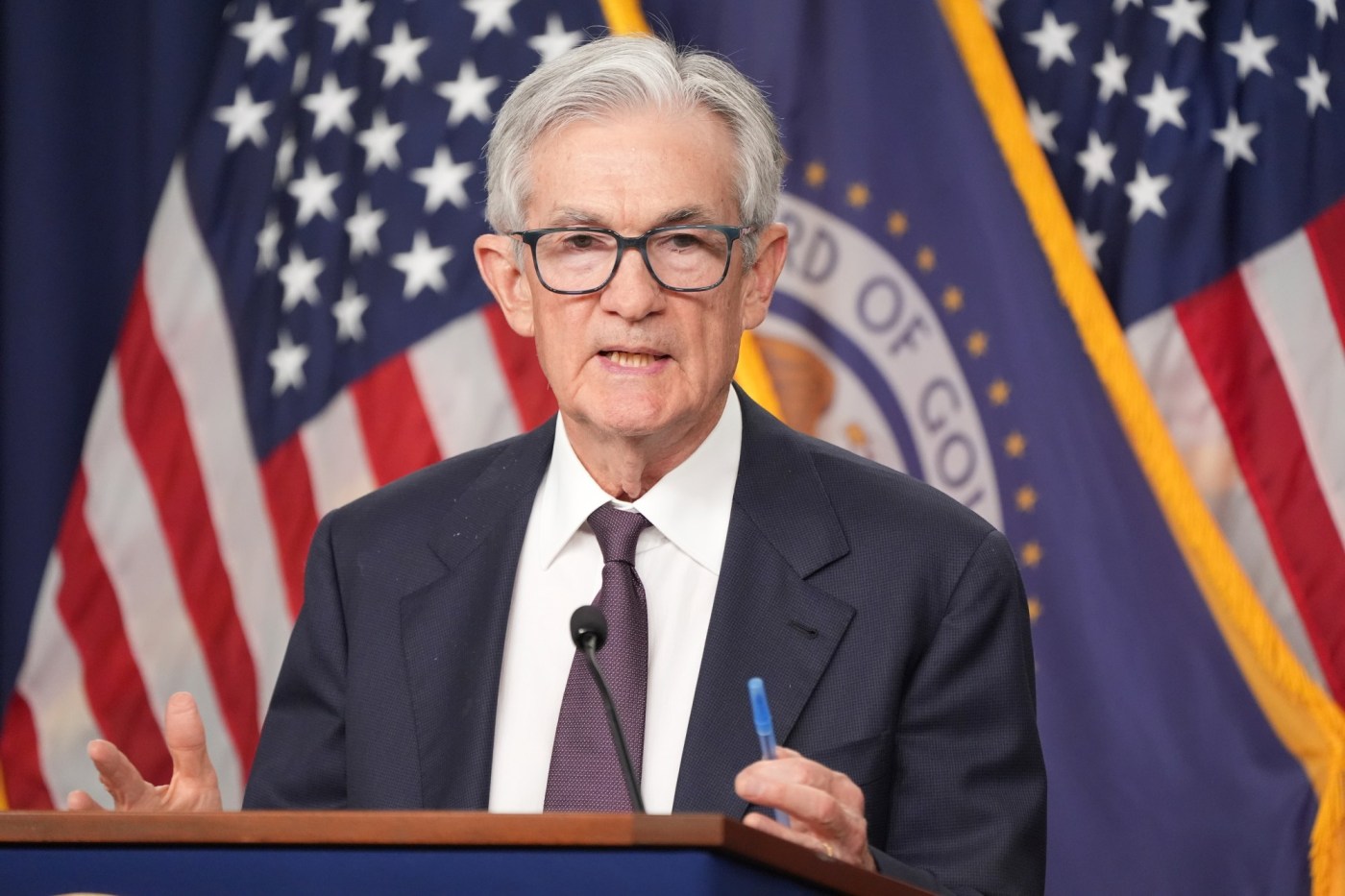World
Federal Reserve Set to Cut Rates Amid Economic Data Blackout

The Federal Reserve is poised to implement another interest rate cut this Wednesday, despite ongoing challenges posed by a lack of government economic data due to the current government shutdown. The anticipated decision by the Federal Open Market Committee (FOMC) is expected to lower the benchmark interest rate by a quarter-point, which would bring it to a range of 3.75% to 4%. This move is aimed at preventing a rise in unemployment.
In navigating a complex economic landscape, the Federal Reserve faces the dual challenge of maintaining stable prices while promoting maximum employment. Recent remarks from Jerome Powell, Chair of the Federal Reserve, emphasized the delicate balance required in policy-making. “Rising downside risks to employment have shifted our assessment of the balance of risks,” Powell stated earlier this month. He noted, “There is no risk-free path for policy as we navigate the tension between our employment and inflation goals.”
Inflation Insights Amid Data Gaps
The timing of the rate cut coincides with the release of the only government inflation report since the onset of the shutdown. In September, inflation rose by 3% compared to the same month last year, marking the fastest annual increase since January. However, the monthly inflation rate was up just 0.3%, a figure that was less alarming than economists had predicted. This moderation in inflation is not enough to overshadow concerns regarding the labor market.
Nancy Vanden Houten, lead U.S. economist at Oxford Economics, highlighted the Fed’s need to prioritize employment risks in its policy discussions. She pointed out that without the majority of government statistics, the Fed lacks a solid basis to conclude that labor market risks have altered significantly.
Despite inflation remaining above the Fed’s target of 2%, officials are increasingly inclined to prioritize the potential deterioration of the labor market over inflationary pressures. Previous expansive tariffs introduced during the Trump administration have not led to the anticipated price spikes, leading to a consensus among Fed officials that any future hikes in rates will likely be a temporary issue rather than a persistent concern.
Challenges in Employment Data Collection
As the government shutdown extends into a second month, officials are facing significant obstacles in gathering reliable labor market data. The loss of vital employment reports has prompted the Federal Reserve and economists to rely on private measures, such as the ADP employment report and various corporate earnings disclosures, to assess the economic climate.
The absence of critical government data means that the Fed has already missed the release of one jobs report and may not receive the November report on time. Current private sector insights suggest a trend similar to previous government data, indicating low job creation and a slowdown in hiring by businesses. Although the unemployment rate remains historically low, there are increasing signs of layoffs that the Fed is closely monitoring.
Investors are keenly observing the upcoming meeting for indications of the Federal Reserve’s future direction, particularly as many analysts predict another quarter-point cut at the conclusion of the December meeting. According to the CME FedWatch tool, market expectations are already reflecting this anticipated rate reduction. The ongoing government shutdown, however, complicates forecasts, as the absence of essential economic data makes it challenging to project future conditions.
Stephen Kates, a financial analyst at Bankrate, remarked, “October’s expected rate cut is the easy call. But as the government shutdown drags on and key economic data remains unavailable, forecasting the conditions of the economy will become increasingly difficult heading into December’s meeting and the release of a new Summary of Economic Projections.”
As the Federal Reserve prepares for its decision, the balance between combating inflation and supporting the labor market remains a critical focus for policymakers and investors alike.
-

 Sports2 weeks ago
Sports2 weeks agoSteve Kerr Supports Jonathan Kuminga After Ejection in Preseason Game
-

 Politics2 weeks ago
Politics2 weeks agoDallin H. Oaks Assumes Leadership of Latter-day Saints Church
-

 Lifestyle2 weeks ago
Lifestyle2 weeks agoKelsea Ballerini Launches ‘Burn the Baggage’ Candle with Ranger Station
-

 Lifestyle2 weeks ago
Lifestyle2 weeks agoDua Lipa Celebrates Passing GCSE Spanish During World Tour
-

 Entertainment2 weeks ago
Entertainment2 weeks agoZoe Saldana Advocates for James Cameron’s Avatar Documentary
-

 Business2 weeks ago
Business2 weeks agoTyler Technologies Set to Reveal Q3 2025 Earnings on October 22
-

 Science2 weeks ago
Science2 weeks agoChicago’s Viral ‘Rat Hole’ Likely Created by Squirrel, Study Reveals
-

 Health2 weeks ago
Health2 weeks agoRichard Feldman Urges Ban on Menthol in Cigarettes and Vapes
-

 World2 weeks ago
World2 weeks agoD’Angelo, Iconic R&B Singer, Dies at 51 After Cancer Battle
-

 Business2 weeks ago
Business2 weeks agoMLB Qualifying Offer Jumps to $22.02 Million for 2024
-

 Health2 weeks ago
Health2 weeks agoCommunity Unites for Seventh Annual Mental Health Awareness Walk
-

 Sports2 weeks ago
Sports2 weeks agoPatriots Dominate Picks as Raiders Fall in Season Opener









